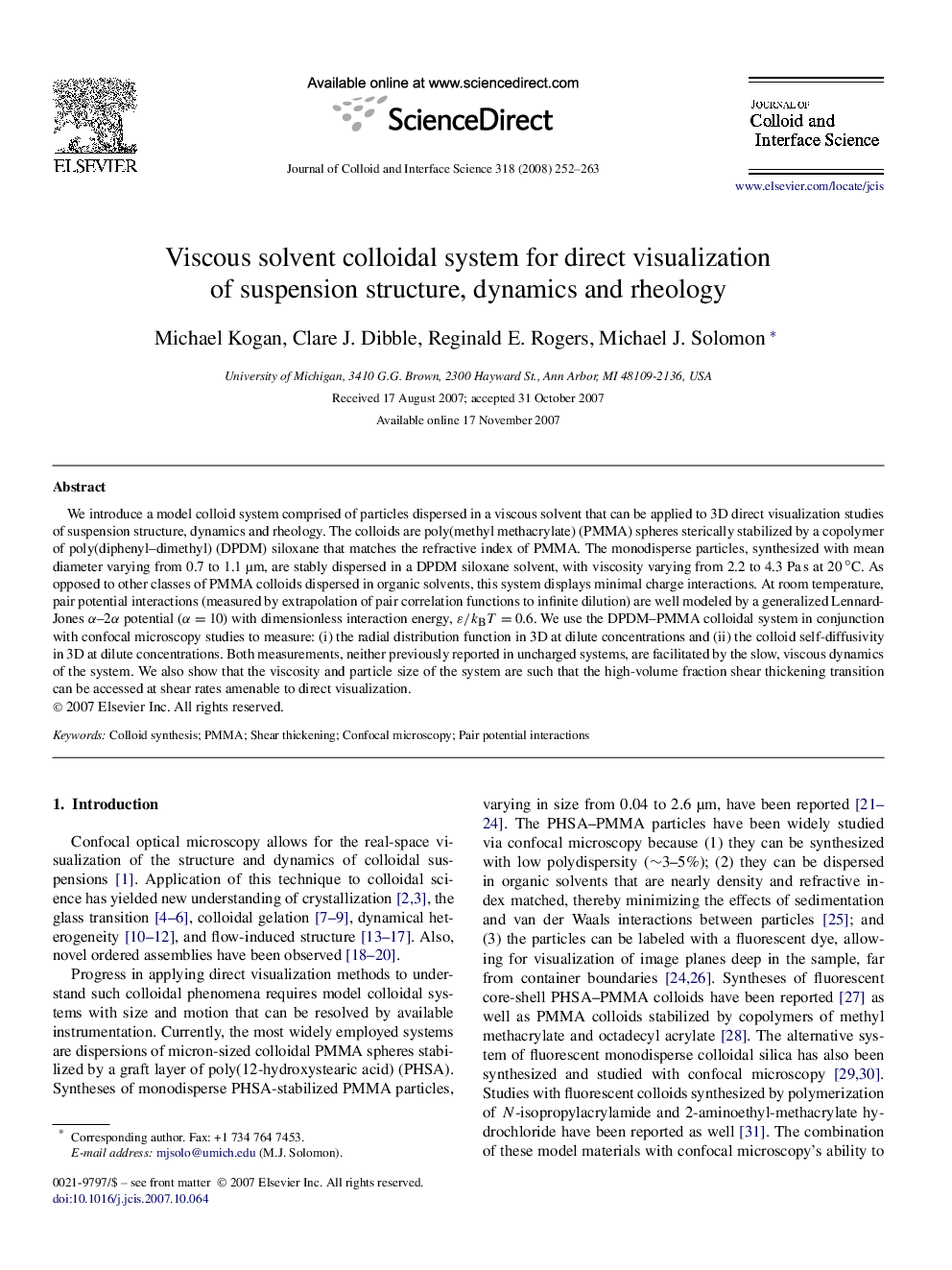| Article ID | Journal | Published Year | Pages | File Type |
|---|---|---|---|---|
| 611369 | Journal of Colloid and Interface Science | 2008 | 12 Pages |
We introduce a model colloid system comprised of particles dispersed in a viscous solvent that can be applied to 3D direct visualization studies of suspension structure, dynamics and rheology. The colloids are poly(methyl methacrylate) (PMMA) spheres sterically stabilized by a copolymer of poly(diphenyl–dimethyl) (DPDM) siloxane that matches the refractive index of PMMA. The monodisperse particles, synthesized with mean diameter varying from 0.7 to 1.1 μm, are stably dispersed in a DPDM siloxane solvent, with viscosity varying from 2.2 to 4.3 Pa s at 20 °C. As opposed to other classes of PMMA colloids dispersed in organic solvents, this system displays minimal charge interactions. At room temperature, pair potential interactions (measured by extrapolation of pair correlation functions to infinite dilution) are well modeled by a generalized Lennard-Jones α–2αα–2α potential (α=10α=10) with dimensionless interaction energy, ε/kBT=0.6ε/kBT=0.6. We use the DPDM–PMMA colloidal system in conjunction with confocal microscopy studies to measure: (i) the radial distribution function in 3D at dilute concentrations and (ii) the colloid self-diffusivity in 3D at dilute concentrations. Both measurements, neither previously reported in uncharged systems, are facilitated by the slow, viscous dynamics of the system. We also show that the viscosity and particle size of the system are such that the high-volume fraction shear thickening transition can be accessed at shear rates amenable to direct visualization.
Graphical abstractFigure optionsDownload full-size imageDownload as PowerPoint slide
